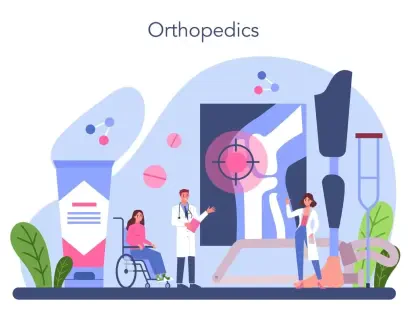In the complex and ever-evolving landscape of healthcare, effectively managing IT spending is crucial. Healthcare providers increasingly rely on technological innovations to meet regulatory requirements, enhance patient care, and improve operational efficiency. Thus, optimizing IT spending is vital in balancing high-quality healthcare delivery with the financial constraints of the industry. With compliance pressures rising and patient expectations evolving, effective IT expenditure management is not merely an operational necessity but a strategic imperative. By capitalizing on financial management technology, compliant security measures, and innovative strategies like telehealth, healthcare entities can overcome challenges, achieve sustainable growth, and enhance care quality and accessibility.
Embracing Financial Management Technology
Integrating financial management technology in healthcare is pivotal for optimizing IT spending while maintaining service quality. These technologies streamline financial operations, mitigate financial risks, and manage healthcare facility finances with precision. By leveraging such technology, healthcare providers can efficiently meet government mandates, address patient safety concerns, and navigate competitive pressures and rising operational costs synonymous with the modern healthcare environment. Financial management solutions offer the capability to monitor financial metrics, enable predictive analysis, and facilitate real-time adjustments to financial strategies, ensuring robust financial health despite external challenges.
Effective financial management technology enables healthcare entities to maintain transparency and accuracy in accounting practices, fulfill regulatory criteria, and foster trust among stakeholders. Given the complexities in healthcare billing and reimbursement processes, these tools offer advanced functionalities to handle intricate payment models and dynamic pricing structures. Furthermore, this technology aids in managing resource allocation by providing insights into cost-effective service delivery options and optimizing budget distributions. As the focus on value-based care intensifies, leveraging financial technology becomes indispensable for aligning healthcare delivery with fiscal prudence, thus promoting sustainable operations and improved patient outcomes.
Navigating Compliance and Regulation
Navigating compliance and regulatory requirements is central to optimizing IT spending in healthcare. Compliance with regulations, such as the Health Insurance Portability and Accountability Act (HIPAA) and the Health Information Technology for Economic and Clinical Health (HITECH) Act, is fundamental in mitigating financial penalties and safeguarding patient data. Robust security measures, including data encryption, access controls, electronic health records (EHRs), and data breach detection systems, are indispensable components for achieving compliance. Such measures ensure healthcare providers avoid expensive compliance issues and maintain patient trust through reliable data protection.
The implications of non-compliance in healthcare can be extensive and financially debilitating. Therefore, adherence to regulatory requirements is a crucial component of financial strategy. Comprehensive compliance frameworks backed by technology help identify potential risks early and ensure remedial actions are proactively taken. By embedding security protocols and audits into daily operations, healthcare entities can safeguard against breaches that might compromise patient privacy and incur high rectification costs. In a data-driven healthcare ecosystem, aligning IT strategies with regulatory demands is not just about compliance; it is an opportunity to enhance internal efficiencies and optimize technological investments for sustainable returns.
Leveraging IT Metrics for Efficiency
In healthcare, strategic use of IT metrics forms the backbone of efforts to optimize spending and enhance operational efficiency. By analyzing key performance indicators, such as hospital stay durations, incident occurrence rates, and operating margins, healthcare organizations can identify inefficiencies and implement corrective measures. These metrics provide invaluable insights into resource utilization, patient care processes, and administrative functions, identifying potential areas for cost reduction. Diligent analysis and data-driven strategies enable healthcare providers to streamline operations, enhance service quality, and ensure spending aligns with patient care priorities.
Adopting a metrics-based approach facilitates informed decision-making about where to invest in technology and where to curtail costs. Data analytics help healthcare facilities pinpoint processes that lead to resource wastage and recalibrate operational procedures to prevent financial leakage. Automation of administrative tasks further optimizes resources by reducing human errors, freeing staff for patient-focused activities, and decreasing operational expenditures. Such efficiencies translate into better financial health for healthcare organizations, enabling them to channel resources toward patient-centric initiatives and innovation-driven healthcare models that enhance patient outcomes and satisfaction.
Harnessing Automation and Technological Innovation
The adoption of automation and innovative technology in healthcare contributes significantly to optimizing IT expenditure by minimizing manual inefficiencies and reducing costs associated with administrative burdens. Functions such as insurance processing, billing, and patient scheduling are prone to human error, resulting in significant overhead costs. Automating these processes ensures accuracy and liberates healthcare professionals to focus on delivering superior patient care. Through sophisticated algorithms and machine learning, healthcare providers can further improve diagnostic accuracy and treatment plans, enhancing operational efficiency and patient care quality.
In addition to automation, a cohesive digital health strategy is pivotal in aligning IT spending with patient care goals. Embracing telehealth solutions, wearable health devices, and patient engagement applications allows healthcare entities to expand access to care while simultaneously improving cost-efficiency and service delivery. These digital tools provide platforms for remote monitoring, health education, and real-time patient-provider interaction, facilitating a responsive and inclusive healthcare model. Strategic integration of technology emerges as a key enabler for realizing the dual objectives of financial optimization and elevated patient experiences, forming the cornerstone of a future-ready healthcare paradigm.
Reaping Benefits from Telehealth Investments
Assessing the return on investment from telehealth initiatives is integral to the strategic alignment of IT spending with healthcare goals. Telehealth has transformed traditional care models by offering virtual consultations, remote monitoring, and telepsychology, providing versatile solutions to meet diverse patient needs. These technologies expand geographical reach and accessibility while offering financial advantages by reducing infrastructure requirements associated with physical healthcare facilities. Understanding the financial impact and savings from telehealth permits healthcare organizations to effectively strategize and optimize IT investments for present and future needs.
Investing in telehealth yields multifaceted benefits that extend beyond cost savings. The ability to deliver healthcare services remotely increases patient engagement, reduces appointment no-show rates, and mitigates logistical challenges of physical travel, enhancing patient satisfaction and care continuity. Additionally, integrating wearable technology and health apps complements telehealth services, providing relevant health data for informed clinical decision-making. These innovations promote a patient-centric approach to healthcare, aligning with contemporary trends toward personalized care. Healthcare organizations must continuously evaluate and refine telehealth strategies to maximize benefits, ensuring investments align with evolving healthcare priorities.
Crafting a Sustainable Digital Health Strategy
To successfully align IT spending with healthcare delivery goals, establishing a well-rounded digital health strategy is essential. This strategic framework should encompass varied components, including telehealth solutions, healthcare applications, and data analytics, designed to foster connectivity, efficiency, and patient engagement. In today’s healthcare environment, where data-driven decision-making is paramount, leveraging a comprehensive strategy promotes efficiency and ensures technological investments support overarching care objectives. This alignment is crucial as healthcare providers navigate patient-centric models, focusing on enhanced service delivery, outcome measures, and personalized care.
A robust digital health strategy empowers healthcare providers by integrating innovative solutions that enhance diagnostics, treatment planning, and patient interaction. Technologies like artificial intelligence and machine learning augment predictive analytics, permitting tailored treatment regimens and proactive health management. Maintaining strategic focus on emerging trends and patient expectations allows healthcare providers to cultivate a sustainable model where technology contributes to improved health outcomes and operational success. Thoughtful articulation and implementation of a comprehensive digital health strategy position healthcare entities to adapt effectively to technological advancements while maintaining fiscal responsibility and delivering high-quality patient care.
Future Considerations and Strategic Alignment
Integrating financial management technology into the healthcare sector is crucial for optimizing IT budgets and maintaining high service standards. These technologies streamline financial operations, reduce risks, and precisely manage healthcare finances. By adopting such tools, healthcare providers can effectively comply with government mandates, enhance patient safety, and contend with competitive pressures and increasing operational costs characteristic of today’s healthcare landscape. Financial management solutions equip providers with the ability to track financial metrics, conduct predictive analyses, and adjust financial strategies in real-time, ensuring robust financial health despite external challenges.
Effective financial technology ensures transparency and accuracy in healthcare accounting practices, meeting regulatory standards and building stakeholder trust. Given the complex nature of healthcare billing and reimbursement processes, these technologies deliver advanced functions to manage intricate payment models and adjustable pricing structures. Furthermore, they assist in resource allocation by offering insights into economical service delivery options and optimizing budget distributions. As the emphasis on value-based care grows, healthcare providers must leverage financial technology to align delivery with fiscal responsibility, promoting sustainable operations and enhancing patient outcomes across the board.









